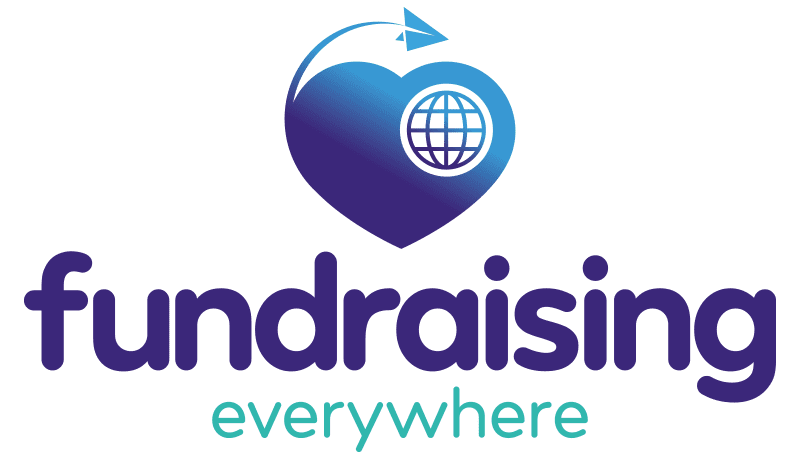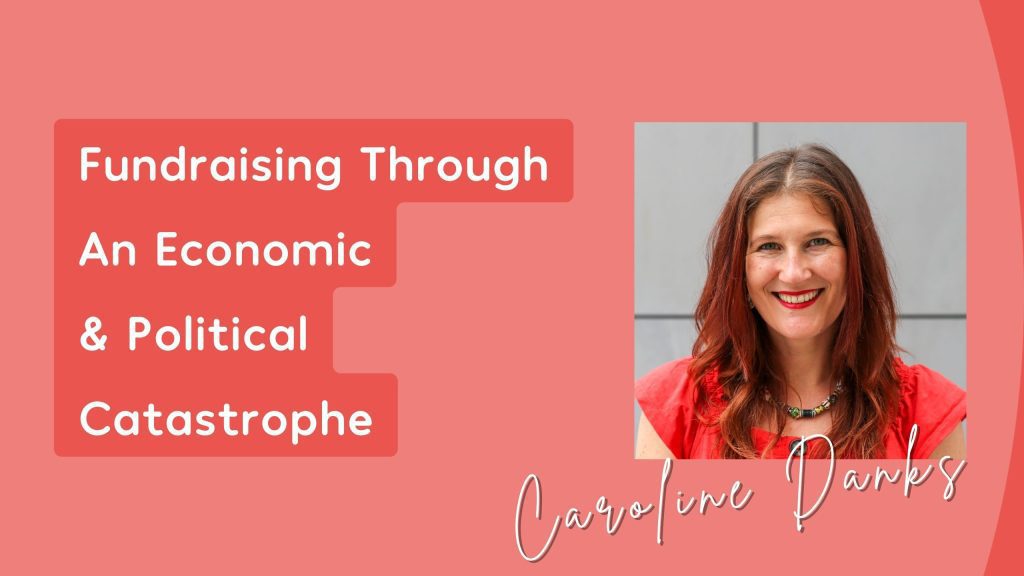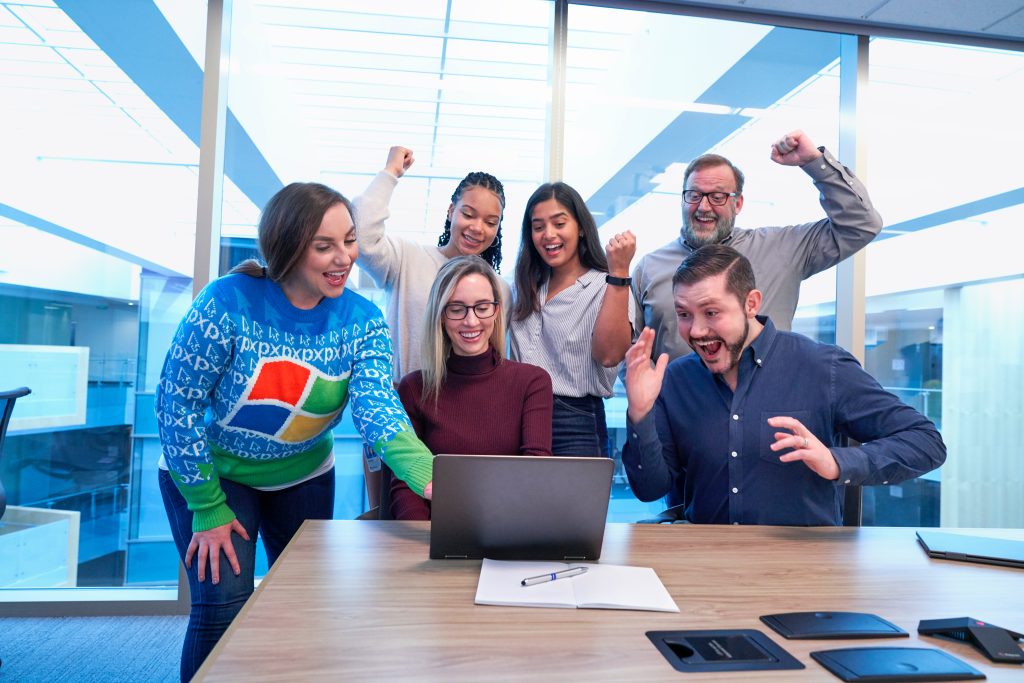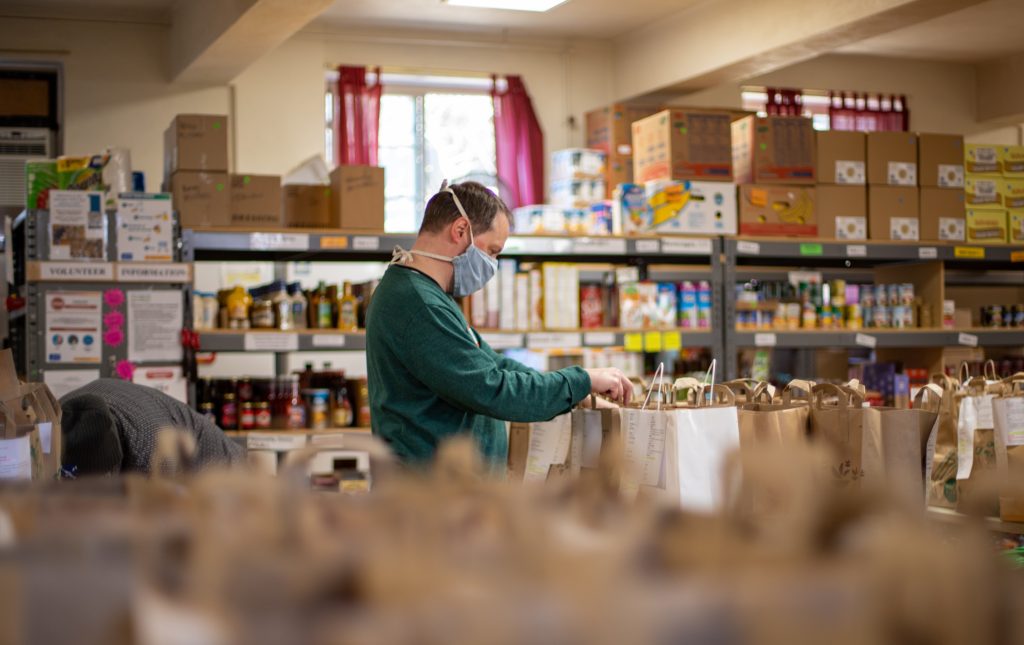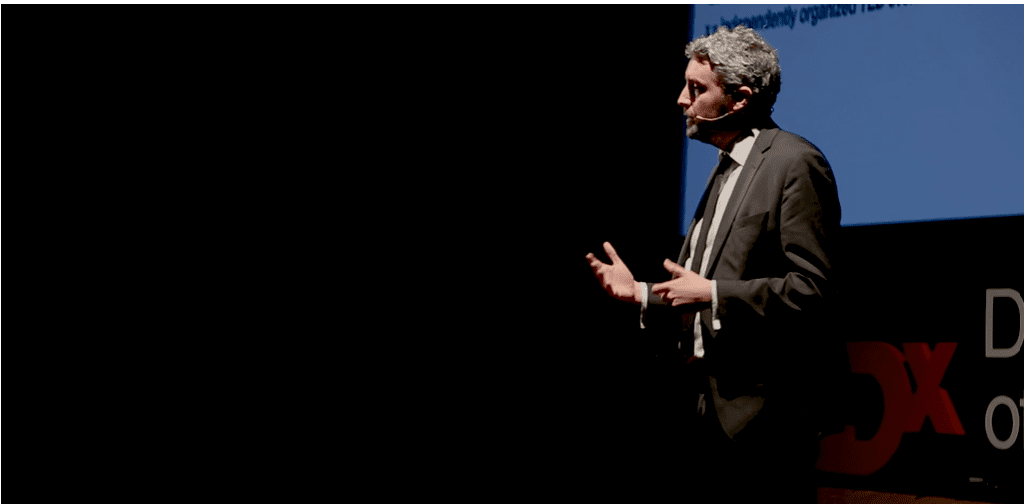
Written by Simon Scriver
The dream: Creating accessible learning for everyone
When Nikki and I launched Fundraising Everywhere in 2019 we wanted to create a fundraising community and training events that were affordable, accessible, engaging and human.
We wanted to elevate speakers to new audiences and give them the same opportunities we had been so fortunate to have had ourselves.
All of the speakers at our first conference were paid.
We did this by securing sponsors and by offering a profit share to everyone involved.
Ever since then we've been very vocal about speaker payments and our belief that conferences should always value the time of the people that make their event a success.
Your speakers need to be paid. If you can't afford to pay people fairly then you can't afford to do it.
Speakers of course don't have to accept payment, but a standard policy of no payment or putting speakers in the awkward position of having to ask for financial support is an outdate practice.
Let me share the journey I've been through as a professional speaker...
My journey as a professional speaker
After several years as a successful fundraiser, I had learnings to share.
My good friends at The Wheel came to me with a chance to share my wins, mistakes and learnings with a room full of charity staff and volunteers.
I was fortunate enough to be paid by The Wheel. I was privileged enough to be in a job where could take time to work on my training session. I had a supportive partner and a supportive board who saw the benefit of my doing this.
Your speakers need to be paid. If you can't afford to pay people fairly then you can't afford to do it.
I was privileged. I worked hard to create an opportunity for myself...but I'm aware no matter how hard some people worked they would never have that same opportunity.
I put the time, money and effort into trying to be a better speaker. I started Toastmasters...a life-changing experience you're probably sick of hearing me talk about. It cost me €5 and a few hours each week.
I continued to deliver training. The majority of the time it was unpaid.
Often there would be a personal cost.
I had to cover my own time.
My own travel and my own expenses.
I was privileged. I worked hard to create an opportunity for myself...but I'm aware no matter how hard some people worked they would never have that same opportunity.
I was fortunate enough to be able to do that. It allowed me to get better and eventually I started to get more and more speaking opportunities.
I've been able to earn a living from presenting and speaking. Despite my overwhelming anxiety and insecurities, I love it. I'm so happy that I've had the chance to become a better speaker, even to the point that I represented UK & Ireland at Toastmaster's world speaking championship (I was disqualified because I went over time).
My first international conference was AFP Congress in Toronto. It's still probably my favourite conference. I'm grateful to the wonderful Amy Pawluk and committee for taking a chance on me, and every year at Congress for the rest of my life I will make a point of thanking Amy.
AFP paid for my travel and accommodation. The trip still cost me money, but I was privileged enough to have the means to cover it.
I've spoken at conferences such as ICON that don't even pay expenses. Their invitation for me to speak cost me approximately €3,000 plus the loss of billable hours.
All of the speakers at our first conference were paid.
The big opportunity gap
The majority of people working in the nonprofit sector can not afford to pay hundreds let alone thousands for speaking opportunities.
As a result, the shareable skills and knowledge of our sector sits behind a gatekeeper.
Potential speakers who can teach us how to be more successful aren't heard because they can't afford to share.
Every once in a while, I'll post on LinkedIn that speakers need to be paid. Every once in a while, someone disagrees, dismisses or calls me naive. They always look like me. Their reasoning generally boils down to the idea that speakers should invest in themselves and that the exposure is invaluable.
Let me attempt to gather all my responses to that fallacy here:
- Start by Googling 'exposure as payment' and look at one of the millions of articles or memes scoffing at this. Then consider that maybe, just maybe you're on the wrong side of history.
- That's a big investment. Even if that €3,000 creates a huge return, most of us don't have that kind of cash lying around.
- Exposure for what? Another unpaid piece of work? At some point someone has to pay...why is it that your conference gets a pass?
- Not everyone needs exposure. Not everyone is an agency, salesperson, or desperately in need of affirmation like you and me. One might even argue that the fundraisers we'd benefit most from hearing are the ones that don't need any exposure because they're too busy working.
- Not everyone wants exposure. Imagine! Your conference tags some poor fundraiser on LinkedIn and one of their major donors see that they're delivering a session titled "5 reasons your donors are like aggressive otters".
Shareable skills and knowledge of our sector sit behind a gatekeeper.
Changing things for the better
Let's face it...expecting your speakers to offer unpaid labour is another outdated practice we've fallen into the trap of accepting because it's always been that way.
Potential speakers who can teach us how to be more successful aren't heard because they can't afford to share.
Our sector suffers because of it.
So let's change it:
- If you're a speaker or potential speaker then know your value. Ask for payment or true value exchange. Tess Nixon Spiller said you need to "really understand what the business development offer is."
- If you're a sponsor then ask if speakers are being paid. If not, why not? Offer to pay more to enable it (Don't worry about the cost...you'll get more exposure!).
- Conferences need to prioritise speaker payments as cost. As Ryann Miller said, "If we want a sector that truly and objectively values its professionals, we need to model the behaviour we identify as having value. Compensation is a key lever to show value."
- If you're an attendee then ask the event organisers what their speaker payment policy is. If you're learning from someone who is relying on 'exposure' then give them that value...put aside some time to look deeper in to what they're promoting or offering.
If you're a speaker or potential speaker then know your value. Ask for payment or true value exchange.
I'd love to hear your thoughts, your own journey and your suggestions.
And if you'd like to chat about sponsor opportunities, speaking opportunities, or any of the work we do at Fundraising Everywhere then I'd love to hear from you.
You can get in touch with me here: simon@fundraisingeverywhere.com

Written by Emily Collins-Ellis, CEO of I.G. Advisors.
"Fellowship seeks to bring together fundraisers to #FixTheFlow of resources for good"
Emily Collins-Ellis, CEO, I.G. Advisors
My journey as a resource activist
Recently, we at I.G. Advisors opened applications for our #FixTheFlow Fellowship, and I’m really grateful to Fundraising Everywhere for supporting what we’re doing, and inviting me to share a bit about why we’ve developed the programme.
To do that, I’d like to tell you a bit about my journey as a fundraiser, and as (what I call) a resource activist.
Like many of us, I accidentally got into fundraising.
It was my way of getting into the nonprofit sector, where I felt I would have purpose, and I spent years in Officer, Manager and Trustee roles across small, medium and large charities.
I’ve really seen it all! Unfortunately, I had an immediate ‘in the deep end’ introduction to the major challenges in the profession:
- My targets were always growing, and being set by budgeting and strategic processes that were completely disconnected from what I felt was possible in the market or my portfolio
- I felt immense pressure to meet those targets so as not to put our service users or organisation at risk, which felt really scary and heavy.
- The skills required to fundraise seemed to be simultaneously so basic that Trustees would tell me ‘just read the Sunday Times Rich List’, and so complex that no one could provide me with clear training or guidance.
- Sometimes, I would feel under pressure to compromise my values in the name of bringing in money. For example, by communicating about service users in undignified language to elicit bigger responses from donors; competing with peer organisations in aggressive ways; or rushing relationship building with donors to meet targets.
Even though I did well, I still wasn’t feeling very sure about my role as a fundraiser - I got into nonprofit work to feel connected to a purpose, but I felt stuck churning through transactional relationship building in a silo.
Then, the post-financial crisis austerity policies hit, and decimated the public funding for the work my charity was doing.
Suddenly, it wasn’t a matter of meeting targets for our work, but being part of a sector that was being actively deprioritised by government - it was a survival risk for us all.
My targets were always growing, and being set by budgeting and strategic processes that were completely disconnected from what I felt was possible in the market or my portfolio
And, the funding hole left by this couldn’t be filled by foundations alone - it was bigger than all their endowments put together.
This was the moment where I realised, this isn’t an ‘us and them’ sort of job - where I’m just trying to get money out of people on the other side of the table, and if I do that at enough tables, and do it better than everyone else, it will be fine.
This is when I zoomed out and realised that I was part of a funding system: a big, complex one, where my individual work, and my organisation, were just a part of the picture. I could work harder and do better on my bit of the pipeline, but if the flow of resources from wealth holders, businesses or government wasn’t there, or I was getting those limited resources at the expense of another vital organisation, what good would that do?
That is when I started to see myself as a resource activist. Someone whose job it was to organise giving, redistribute resources, and play a role within the funding system overall. I wanted to champion my causes and the practice of giving, as well as my organisation. And I knew I couldn’t do it alone.
Sometimes, I would feel under pressure to compromise my values in the name of bringing in money
My move to create social & environmental change
And so, I joined I.G. Advisors. I.G. creates social and environmental change by working with the philanthropy, business and nonprofit sectors to develop impact and growth strategies.
We have worked with 170+ organisations and 2,000+ fundraising professionals in 60 different countries, and whilst we’d love to work with everyone on developing organisational strategies, we know not every fundraiser or organisation is in a place where they can access such comprehensive support.
We’ve already responded to that challenge by developing lots of free resources, such as our What Donors Want podcast and Field Guide to Relationship Based Fundraising, but we were hearing from hundreds of fundraisers who want more hands-on support, more ideas, more chances to connect with peers, and more ways to address the challenges of the funding system. And, in the current climate, we know our approach is more vital than ever.
Resources don’t always flow where they are needed most and there are leakages, blockages and cracks across the funding system that are hampering true, long-lasting change.
#FixTheFlow
And so, we have developed, our #FixTheFlow Fellowship programme. This fellowship programme will focus on four levels of impact:
- Individual - where we’ll work with you on your personal development as a fundraiser. Enhancing your craft, your confidence, and your commitment, no matter where you’re working.
- Organisational - where we’ll help you to identify your pain points and goals, and set you up for success when driving fundraising within your workplace, no matter your job title.
- Sectoral - where we’ll bring together cohorts of fundraisers who face similar challenges with misconceptions of their causes, to do action learning together.
- Systemic - where we’ll collectively define the areas of the funding system where we want to #FixTheFlow, and develop collaborative action plans and special projects together.
Like any movement, this fellowship will be what we make of it. We have designed an experience that is not just educational, but transformational.
We feel that people and institutions should be giving more, and giving better. Resources don’t always flow where they are needed most and there are leakages, blockages and cracks across the funding system that are hampering true, long-lasting change.
If you agree, I really hope you will join us for the first cohort of this Fellowship. And I’m excited to meet you when you do.
Let’s all #FixTheFlow of resources for good.
Applications for the first cohort close 20th November 2022.
You can find out more here.
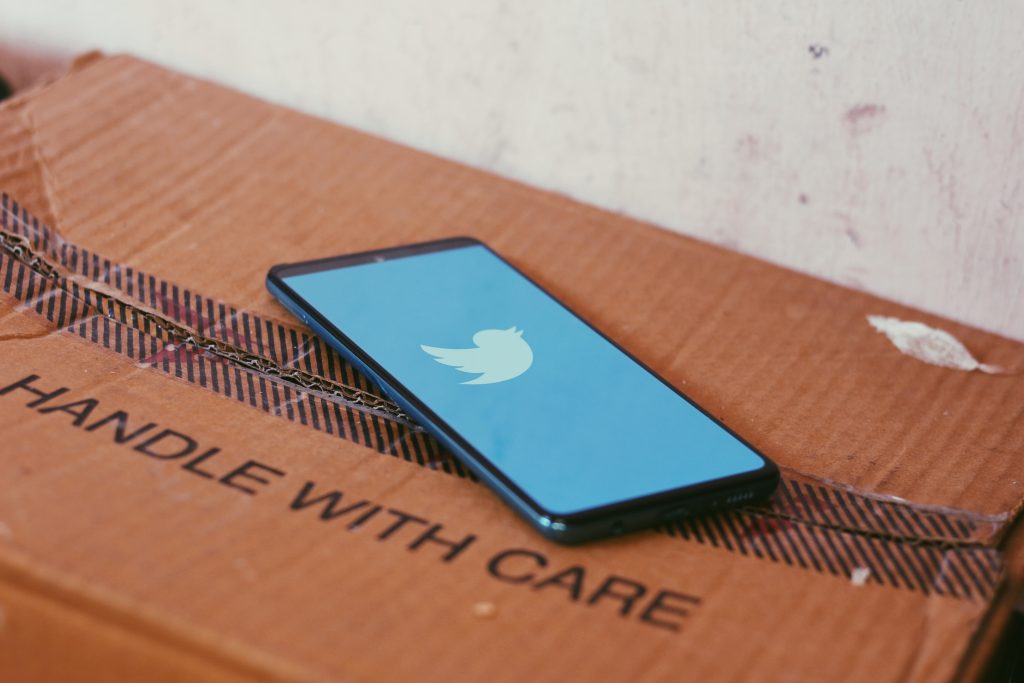
Written by Simon Scriver, Co-Founder of Fundraising Everywhere
The Burning Platforms
With both Facebook and Twitter finding themselves in precarious situations, we’ve all been reminded of the risk of relying on any social media platform to connect with your audience. It’s important that part of our ongoing communications strategy is to encourage followers to also connect and subscribe through other traditional channels such as email and telephone.
It’s not just about the risk of some tech bros destroying a platform you’ve grown to rely on. It’s also about controlling your own data and not leaving your brand’s visibility at the mercy of an algorithm you have no say in - social media notoriously has terrible response rates compared to other media.
We need to be attempting to connect with our audience elsewhere in an ongoing effort to diversify our marketing channels, add people to your database, and collect the data you need to build up a full view of your donors to steward them properly.
Here are 7 ways to do this:
1. Offer a Free Download (Lead Magnet)
Downloadable resources such as fact sheets and helpful guides are a great way to bring value to your social media followers while capturing their contact details and consent. Think beyond your annual reports and consider what resources you have at your fingertips that will appeal to your audience.
Aim to help and educate. Infographics, cheat sheets, and ‘5 ways to…’ assets all do really well here.
With both Facebook and Twitter finding themselves in precarious situations, we’ve all been reminded of the risk of relying on any social media platform to connect with your audience.
2. Host a virtual event
Livestreams and pre-recorded video events allow you to engage supporters and bring them in to your organisation in a way that hasn’t previously been possible. Bring them behind-the-scenes, let them hear from beneficiaries and connect directly to your staff. Plus, they offer lots of touchpoints (ie. registration; before, during and after the event) to prompt your attendees to stay in touch through email, telephone and post.
Talk to our friends at everywhereplus.com to find out how easy this can be and what support is available to you.
3. Surveys
Surveys aren’t just for learning about your audience and letting them know they have a say. They’re also super for moving people off of social media - people love sharing their opinions and a mailing list ‘ask’ fits nicely at the end of your survey questions.
They can be as simple as one quick question - it’s about getting your followers to take that step and allowing you to gather more details.
It’s not just about the risk of some tech bros destroying a platform you’ve grown to rely on. It’s also about controlling your own data and not leaving your brand’s visibility at the mercy of an algorithm
4. Contests
Like surveys…who doesn’t love a contest?
That gift-in-lieu you haven’t been able to use could make a great contest prize. (Don’t forget to check the rules and regulations in your country around the running of online contests).
It might even just be bragging rights…challenge your followers to get every quiz question right…and while they’re there, encourage them to subscribe.
5. Drive to a blog post with data capture
You and your organisation are experts in your field.
If you’re not already, you should be sharing that expertise in regular blog posts. They show your worth and position you as a useful resource.
Blog posts sharing ‘how to’, explainers, FAQs and news/updates are all great ways to get social media followers to click a link and visit your website.
There’s then a great opportunity to suggest your email mailing list within your blog, at the end or through pop-ups.
6. Direct asks
Like all things in fundraising and marketing sometimes it’s as simple as just asking.
Share a direct link to a form to joining your mailing list regularly and give your followers a reason to join.
Make it sound appealing! Rather than joining a mailing list, share the benefits - such as early access, useful information, exclusive perks and a connection to community.
7. Hand raisers
Discover what people care about by running ‘hand raiser’ campaigns; ask them what they care about, what changes they want to see in the world, or run fun polls.
Not only will your list grow from this light-touch and fun interaction, the answers they give help you build a picture of their motivations for that all-important stewardship work.
Check out my full session On Demand:
A Step-by-Step Guide To Growing Your Mailing List
Use discount code ‘ELONMUSK’ to download it for free.
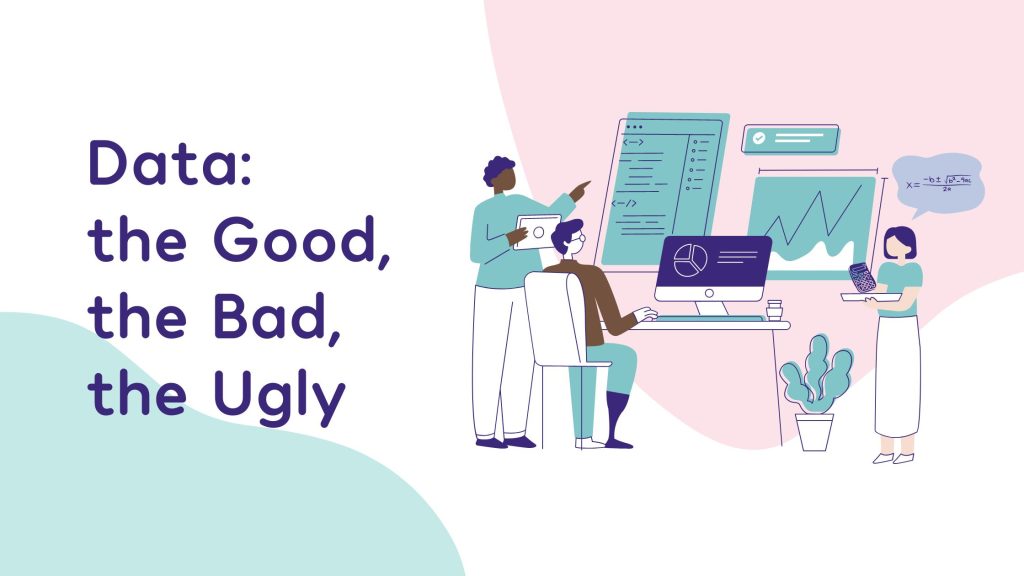
Written by Leesa Harwood, Owner of By The Waves Charity Consulting.
Too much of a good thing
Data is great. It underpins good decision-making. It helps fundraisers to understand supporters, articulate impact, measure success and prioritise the deployment of finite resources. But you can have too much of a good thing. Today we have access to lots of data, but nowhere near enough insight. Alexander Chancellor, former editor of The Spectator said:
“Excessive information creates its own form of blindness to what is actually going on.”
Now, charity professionals are faced with so much data, that they simply can’t see the wood for the trees. They are data blind.
Good, Bad & Ugly
With so much data available, sorting the good from the bad can be challenging. This summer I sifted through over 85 data sources, reports, and documents to compile After the Storm, a summary of key, socio-economic trends and their implications for charity leaders. I am not a data scientist. My background is charity leadership and fundraising, so it was hard going. The more reports I read, the more I realised that data and research can be divided into three categories:
“Excessive information creates its own form of blindness to what is actually going on.”
Alexander Chancellor, former editor of The Spectator
Good
Good data goes beyond a presentation of facts and figures. It evolves into information and then insight. In starts with a fact, then answers the question ‘so what?’ then articulates a clear implication. Good data is based on viable samples, objectivity, and curiosity. It closes the loop between asking a question, analysing facts to find an answer, then adding a big dose of common sense and context to draw a conclusion. It doesn’t just provide information, it delivers enlightenment. Researchers produce good data with one eye on the audience and the problem they’re trying to solve. They adapt their language to present their findings in a relevant and engaging way for their target audience. They know where they can add value and they set out to do so from the start.
Bad
Bad data is everywhere. Vast quantities of facts, figures, graphs, and charts couched in impenetrable language that makes your eyes spin and your ears bleed. Bad data is not necessarily incorrect or corrupt data. It’s just not useful. It is often compiled and presented by incredibly clever people who know their subject matter but not their audience. You have to work hard to optimise bad data. Finding it, translating it, processing it, then applying it to your world or problem. Usually, the ‘so what?’ answer is buried in so much jargon that you give up and go home.
Ugly
This is the worst data of all because can be misleading and fake. It falls into three categories:
1. Clickbait
A headline loosely linked to some random statistics picked from a survey using questionable methodology. Great at grabbing headlines, a data capture tool and a way of inflating click-through statistics.
2. Tiny sample
Survey results with tiny sample sizes are useless. There are over 160,000 registered charities in England and Wales, and yet some high profile, sector bodies persist in presenting conclusive trend data based on samples of less than 50 charities. This is literally not big, and not clever.
3. Pre-determined answer
Usually companies or suppliers commission research or surveys with a specific result in mind. Usually that result nudges you to buy their product. It’s unfair to suggest that all supplier-commissioned research falls into this category. But if a business produces a survey that aligns with its marketing content, it’s always sensible to cross check with an alternative data source just in case.
Data is fickle. With enough manipulation, the right lens and selective bias you can make data say pretty much anything.
Torture the data and it will confess to anything
Data is fickle. With enough manipulation, the right lens and selective bias you can make data say pretty much anything. But as fundraisers, we rely on it to keep us current, efficient and honest so it is important that we know where to go to find good data and how to use it properly. By learning to recognise the good, the bad and the ugly fundraisers will always use the right data to answer the right questions at the right time.
Join me in the Strategy Track at Fundraising Everywhere's Virtual Individual Giving Conference on 27th October, to hear about my go-to good data sources, and a live chat about what today’s data is telling us about the next 12 months in fundraising.
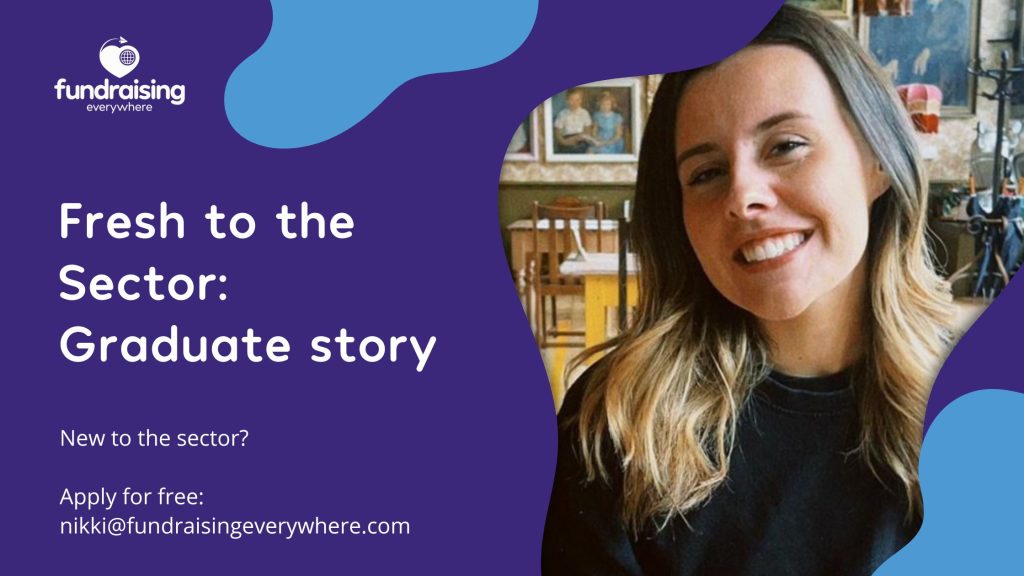
Written by Emma Rolinson
My name is Emma and I’ve worked as an Area Fundraising Officer for Acorns Children’s Hospice for the past six months.
A parent never imagines their child will be diagnosed with a life-limiting or life-threatening condition. But when the unimaginable happens, Acorns steps in, helping families cope at every stage of their child’s life and beyond, wherever and whenever they need it.
The need for children’s hospice care never stops which is why we are here to provide specialist palliative care 24 hours a day, 365 days a year.
My role is within the community, encouraging fundraising and raising awareness across local businesses, schools, faith groups, community groups and individuals.
My name is Emma and I’ve worked as an Area Fundraising Officer for Acorns Children’s Hospice for the past six months.
Finding 'Fresh to the Sector' made me feel immediately welcomed into a community
With only a few months of experience in charity work prior to Acorns, I was nervous but excited to begin a professional career within fundraising.
When I came across the 'Fresh to the Sector' programme advertised on Twitter, I was blown away by the offer of a free course AND six-month Fundraising Everywhere membership!
With the knowledge that my learning was being funded by fellow members of Fundraising Everywhere, I felt valued in my position as a new fundraiser. I was already being made to feel welcome within Acorns, but through seeing this course, I felt immediately welcomed into the wider charity world too.
The opportunity to learn independently allowed me to structure the course around my own workload
With 14 mandatory webinars to watch to complete the course and over 300 hours of additional On Demand content, the opportunity to learn at my own pace was perfect.
Whilst completing my induction at Acorns and getting stuck into my new role, the flexibility of the course allowed me to fit the course into my schedule and workload.
When I came across the 'Fresh to the Sector' programme advertised on Twitter, I was blown away by the offer of a free course AND six-month membership!
Not only did this remove any overwhelming pressure, but it also gave me the chance to utilise the webinars alongside my Acorns journey. If I was learning about GDPR in my own induction, I could find webinars on Fundraising Everywhere to help me independently.
Widening my knowledge of the fundraising sector
Coming from co-ordinating a Christmas project in a smaller charity into a Fundraising Officer role in a larger charity was a big jump.
I quickly learnt that Acorns, like many charities, was split into multiple departments with specific income focuses. Whilst covering this in my induction, the course echoed it with an all-encompassing view of the fundraising sector, covering topics such as Individual Giving, Legacies, Grants and Major Donors. Again, I was able to focus my learning as required within my own role, allowing me to absorb information, when necessary, rather than being overwhelmed all at once.
Make the most of all the content on offer
My confidence has grown exceedingly over the past six months in my role, and I’m so grateful to Fundraising Everywhere for providing such incredible content to encourage me along the way.
To anyone considering signing up to Fundraising Everywhere's 'Fresh to the Sector' programme, I would recommend it without a doubt!
My biggest tip would be to make the most of all the content available. Attend live Member's Clincis where you can take advantage of the workshops and most of all, watch On Demand as much as possible across your six months.
Going forward, I will continue to use everything I’ve learnt within my role and the course in my journey as a fundraiser. My main priority is to engage with supporters, provide bespoke stewardship and continue finding new opportunities for fundraising and awareness.
To anyone considering signing up to Fundraising Everywhere's 'Fresh to the Sector programme', I would recommend it without a doubt!
If you want to chat to me about my journey on the course or about Acorns Children’s Hospice and what we do, don’t hesitate to contact me at emma.rolinson@acorns.org.uk.
Are you a new starter to the charity sector? Join our ‘Fresh to the Sector’ training programme to boost your sector skills and grow your network.
To apply for free, sign up here.
